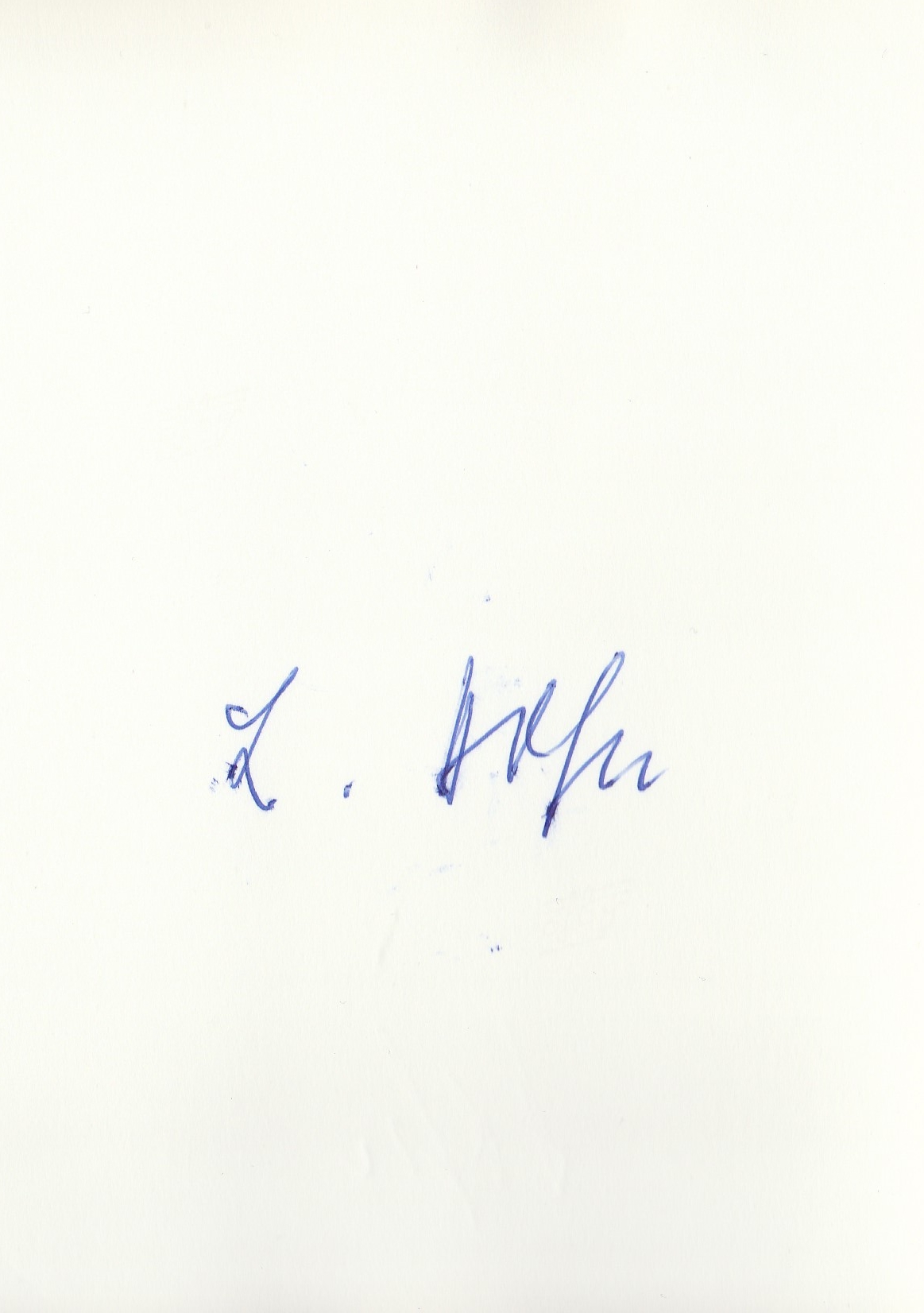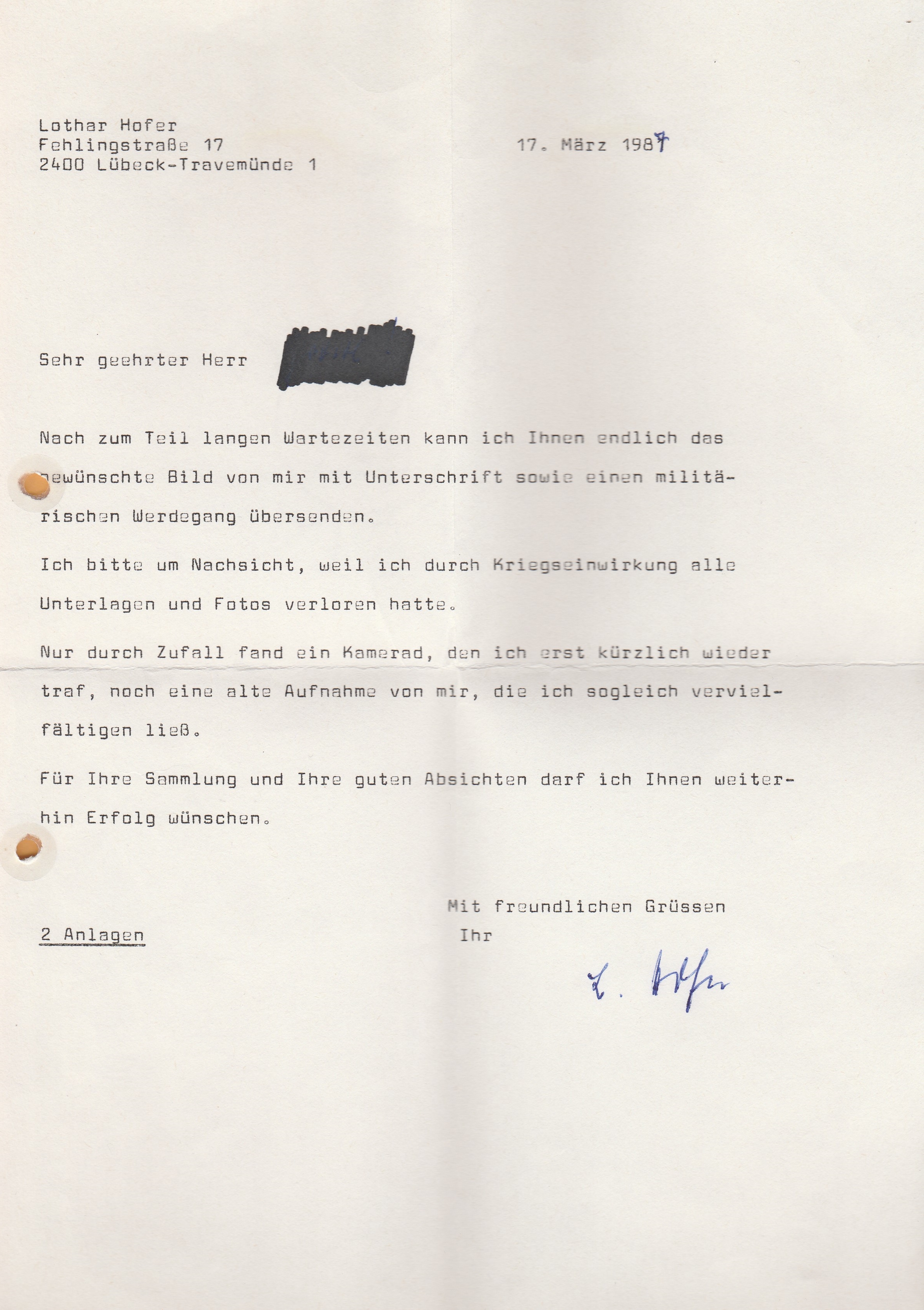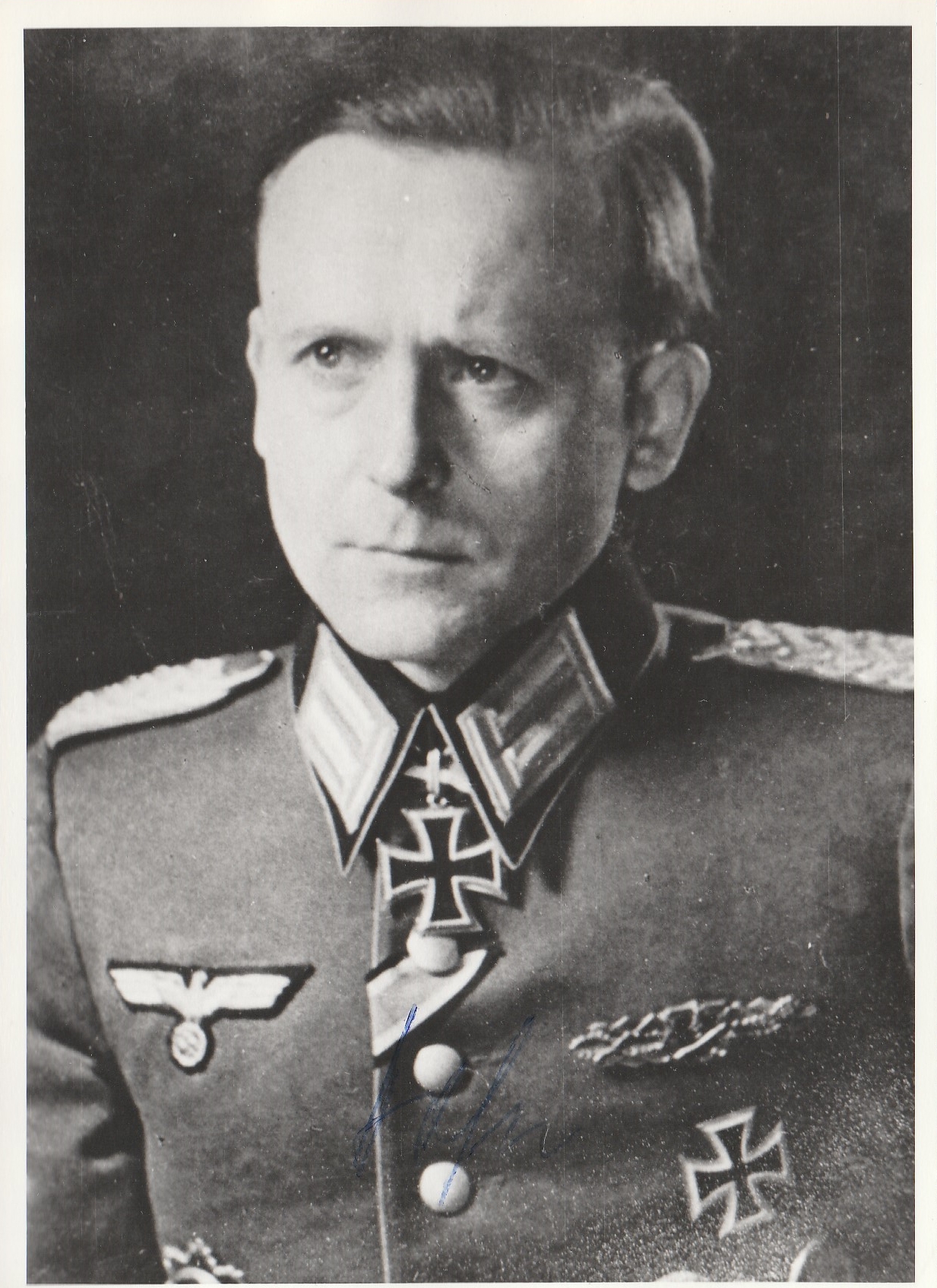


|
HOFER Lothar
SS-Sturmbannführer
Hofer, Lothar
*September 18th, 1914 (Rade/Saxony, Germany)
+January 22nd, 1999 (Travemünde/Lübeck, Germany)
Knights Cross: April 5th, 1945
As: SS-Sturmbannführer / Major der Schutzpolizei Kommandeur III./SS-Artillerie-Regiment 54 / 23.SS-Freiwillige-Panzer-Grenadier-Division “Nederland” / III.SS-Panzerkorps / Heeresgruppe Nord
Postwar signed photo measuring 4" x 5 1/2" signed on back and front as well as letter
Hofer’s Knight’s Cross recommendation reads as follows…
“The then I./SS-Art.Rgt. 54, commanded by SS-Sturmbannführer Hofer, was positioned north and south of Stalgi at the same elevation as the Stalgi—Kalwini road during the Fourth Battle of Courland.
On the 23.01.1945, at around 07:00, large-scale enemy movements in the area northeast of the Purmsati railway station indicated an upcoming major assault. Thus from this time forward the Abteilung was involved in delivering heavy artillery strikes against enemy concentrations and assembly areas for the entire day. As the enemy finally launched their major attack at 11:00 following an extremely heavy fire preparation, they managed to secure a deep penetration into the lines of the left neighbouring unit of the I./SS-Art.Rgt. 54 after a hard fight. However the area comprising the Purmsati train station and the Pionier-Bataillon 54’s frontline, which was covered by the I./SS-Art.Rgt. 54, remained firmly in our hands despite a total of six enemy attacks (each about 200-500 men strong) against this area. The I./SS-Art.Rgt. 54 had a significant share in this full defensive success through its outstanding support of the heavily depleted infantry.
During the next day the enemy succeeding in penetrating the line here as a result of the high losses sustained by our infantry. However the command post, observation posts and firing positions of the I./SS-Art.Rgt. 54, all under the flexible leadership of SS-Sturmbannführer Hofer, would repeatedly distinguish themselves as the last line of defense against an even greater success by the enemy. The crisis in the Stalgi area reached its high water mark on the fourth day of the battle as the enemy attempted to capture the commanding Hill 42.9 (also known as the Ozolinihöhe, and a key feature in this sector) with tanks and strong infantry forces, who tried initially from the front and later via an encircling attack.
The observation post of the 3./SS-Art.Rgt. 54 was situated on this hill, with the Abteilung command post and the firing positions of the 1. & 2./SS-Art.Rgt. 54 located just to the north of it. SS-Sturmbannführer Hofer immediately recognized the decisive importance of this hill.
On his own initiative he collected strong elements of a Bataillon of the 218. Infanterie-Division that was located north of the hill. He organized these units appropriately and assigned it officers and NCOs both from the original Bataillon as well as from his own Abteilung. With this swiftly assembled unit he created a new defensive line which also incorporated his Abteilung command post and the firing positions of the 1. & 2./SS-Art.Rgt. 54.
On Hofer’s orders this unit was broken up and used to fill in the gaps along the line: 3. Batterie observation post (on the Ozolinihöhe), 1. Batterie firing position, Abteilung command post, 2. Batterie firing position. This stood as the new German frontline, within which the two Batterie firing positions and the command post in particular proved to be well suited for close-in defense due to their well built-up fieldworks. They would serve as firm strongpoints from which all enemy attacks were repelled.
Two retreating 8.8 cm Pak-Züge were personally taken over by SS-Sturmbannführer Hofer and the Zugführer, a Leutnant, was immediately arrested. Direct fire from the cannons of the 1. & 2. Batterien and the 8.8 cm Pak guns obliterated several strong enemy assembly areas from their firing positions, and also smashed any enemy attacks that managed to move forward past them.
Under the leadership of SS-Sturmbannführer Hofer this new frontline withstood the strongest of enemy attacks. Hofer prevented the enemy from achieving their intended breakthrough towards Paplaka, which would have had grave consequences for the continuation of the battle in the area southeast of Libau. Due to their heavy losses the enemy ultimately suspended their attacks. The new line that SS-Sturmbannführer Hofer had created and held would serve as the jump-off point for a powerful friendly counterattack during the night of the 26./27.01.1945, which would ultimately meet with success.
Through his ruthless battlefield proficiency and his independently led actions, Hofer holds a decisive share of the victory in this area. He was able to stabilize the frontline at a critical moment and in doing so prevent the enemy from smashing through this very important sector.
I believe Hofer to be quite worthy for the award of the Knight’s Cross on account of his outstanding devotion to duty and successfully conducted defensive action.”
Price: $50.00
Please contact us before ordering to confirm availability and shipping costs.
Buy now with your credit card
other ways to buy
|


